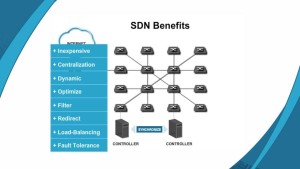 Context: Digital economy needs much better network capacity (bandwidth) and broader coverage (access) than what is mostly available today. We have estimated the projection of 50 Billion devices talking to each other by 2020 in the course of IoT evolution. Requirement for high volume of data, with tremendous speed without quality deterioration is increasing day by day. Industries such as media, manufacturing, sports, BFSI and many more can’t afford to lose a bit of content on time. Video conferencing either on the phone or LAN – WAN enabled office infrastructure is the essential requirement in this digital era. Our traditional infrastructure set up is going through the phase of physical resource abstraction through software. This is an approach to maximize & optimize the usage of existing set up resources including compute, storage and network. IT department and vendors are automating resource management for optimal resource consumption. Software is the way forward to control and administer the resources on the fly. SDN (Software Defined Network) architectural framework, however, was conceived a decade ago, to decouple hardware network resources administration & configuration from the hardware.
Context: Digital economy needs much better network capacity (bandwidth) and broader coverage (access) than what is mostly available today. We have estimated the projection of 50 Billion devices talking to each other by 2020 in the course of IoT evolution. Requirement for high volume of data, with tremendous speed without quality deterioration is increasing day by day. Industries such as media, manufacturing, sports, BFSI and many more can’t afford to lose a bit of content on time. Video conferencing either on the phone or LAN – WAN enabled office infrastructure is the essential requirement in this digital era. Our traditional infrastructure set up is going through the phase of physical resource abstraction through software. This is an approach to maximize & optimize the usage of existing set up resources including compute, storage and network. IT department and vendors are automating resource management for optimal resource consumption. Software is the way forward to control and administer the resources on the fly. SDN (Software Defined Network) architectural framework, however, was conceived a decade ago, to decouple hardware network resources administration & configuration from the hardware.
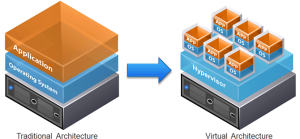 Conceptually, SDN has become one of the building blocks of SDDC (Software Defined Data Centre) in digital DC to provide scalable and cost effective network solution to the whole range of varied and complex SMAC ( Social Media, Mobile, Analytics, Cloud service) and IoT related business application. I have to add “conceptually” because we are not yet there in SDN maturity curve. On the other hand, We are quite gung ho about the pace of virtualization of servers for last several years; there has been tremendous growth in server virtualization space such as vSphere/VMware, xen/Citirx (Amazon EC2 is based upon this), xVM/Oracle, Hyper-V/MS etc. However, network abstraction or network virtualization hasn’t picked up that well as compared to the server virtualization. As part of server virtualization, virtual machines (VMs) are dynamically moved between servers in a matter of seconds or minutes. However, if the movement of a VM crosses a Layer 3 (Session layer onward in NW OSI model) boundary, it can take days or weeks to reconfigure the network to support the VM in its new location. It can sometimes be difficult to define exactly what it means for a network to be agile. That said, if it takes weeks to reconfigure the network to support the movement of a VM, that network isn’t agile.
Conceptually, SDN has become one of the building blocks of SDDC (Software Defined Data Centre) in digital DC to provide scalable and cost effective network solution to the whole range of varied and complex SMAC ( Social Media, Mobile, Analytics, Cloud service) and IoT related business application. I have to add “conceptually” because we are not yet there in SDN maturity curve. On the other hand, We are quite gung ho about the pace of virtualization of servers for last several years; there has been tremendous growth in server virtualization space such as vSphere/VMware, xen/Citirx (Amazon EC2 is based upon this), xVM/Oracle, Hyper-V/MS etc. However, network abstraction or network virtualization hasn’t picked up that well as compared to the server virtualization. As part of server virtualization, virtual machines (VMs) are dynamically moved between servers in a matter of seconds or minutes. However, if the movement of a VM crosses a Layer 3 (Session layer onward in NW OSI model) boundary, it can take days or weeks to reconfigure the network to support the VM in its new location. It can sometimes be difficult to define exactly what it means for a network to be agile. That said, if it takes weeks to reconfigure the network to support the movement of a VM, that network isn’t agile.
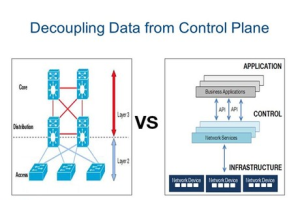
Key Drivers & SDN Evolution: Traditional networking approach results into static framework because functionality is mostly implemented in a dedicated appliance; i.e., switch, router, application delivery controller. In addition, within the dedicated appliance, most of the functionality is implemented in dedicated hardware such as an ASIC (Application Specific Integrated Circuit). ASIC evolves very slowly and hugely under the control of vendor, besides each device needs to be configured individually that results into huge amount of time consumption to adjust network segments. Static architecture of conventional networks is ill-suited to the dynamic computing and storage needs of today’s data centers. The key computing trends, driving the need for a new network paradigm, are changing traffic patterns (applications that commonly access geographically distributed databases and servers through public and private clouds require extremely flexible traffic management and access to bandwidth on demand), Security & flexibility to support consumerization of IT (BYOD etc.), cloud evolution (On-demand and instant IT service delivery) and last but not the least increasing demand due to Big Data and evolving IoT (characterized by 3 Vs — Volume, Velocity, Variety) applications. Traditional network solution constrains IT department to support above trends due to the complexities in the design (Current topology requires engineer to add and stack up devices to address growth and configure, test etc. individually that can’t be reliable and sustainable solution), inability to scale (link over subscription method is not effective to address increasing scale) and vendor dependence ( Lack of standard and open interfaces limit the ability of IT dept. to tailor their individual environments with existing network). Network engineers are migrating from ASIC based hardware engineered network functions which perform basic functions such as packet forwarding, traffic data regulation, encryption/decryption, WOC (WAN optimization controller), Application Delivery Control (ADC) to software defined SDN.
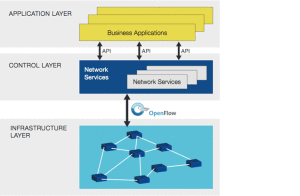 SDN (Software Defined Networking) architecture and design elements: In simple term, Software Defined Networking is a solution framework to manage and administer network services with the help of tightly coupled software around network physical devices such as router, switches etc. It is an emerging architecture that is dynamic, manageable, cost-effective, and adaptable, making it ideal for the high-bandwidth, dynamic nature of today’s applications. This architecture decouples the network control and forwarding functions enabling the network control to become directly programmable and the underlying infrastructure to be abstracted for applications and network services. The OpenFlow® protocol is a foundational element for building SDN solutions. Essential attributes of SDN that makes it interesting and important are the ability to program directly (Network control can be directly programed since it is separated from forwarding functions), regulate traffic flow dynamically, manage centrally (global view of all network components), configure network devices dynamically (using programs and removing dependency of vendor proprietary software) and follow open standard and vendor neutral protocol. Picture above gives building block of SDN by splitting the traditional network design approach to three layers as (1) Application Layer (2) Control Layer and (3) Infrastructure Layer. Application Layer constitutes any business application that is directly consumable by users such as video conferencing, CRM, ERP, SCM applications etc. Network & Security Services refers to functionality mostly between L4 – L7 layers (as per OSI stack) that enables business applications to perform efficiently and securely such as ADCs, WOCs, firewalls, IDS/IPS and DDoS protection. Since control pane is split from traditional routers, switches etc. to central control layer, packet routing algorithm and routing information base is done at central layer. Northbound interface between application layer and central control is built upon Java or REST API standard for communication, whereas southbound communications APIs are primarily based upon OpenFlow protocol (described below) interfacing central control and infrastructure layer. Infrastructure layer consists of lighter version of routers, switches and network devices than the traditional engineered devices. Lighter version, because SDN enabled devices will have control pane moved up in the central control or NOS or SDN Controller from the physical devices.
SDN (Software Defined Networking) architecture and design elements: In simple term, Software Defined Networking is a solution framework to manage and administer network services with the help of tightly coupled software around network physical devices such as router, switches etc. It is an emerging architecture that is dynamic, manageable, cost-effective, and adaptable, making it ideal for the high-bandwidth, dynamic nature of today’s applications. This architecture decouples the network control and forwarding functions enabling the network control to become directly programmable and the underlying infrastructure to be abstracted for applications and network services. The OpenFlow® protocol is a foundational element for building SDN solutions. Essential attributes of SDN that makes it interesting and important are the ability to program directly (Network control can be directly programed since it is separated from forwarding functions), regulate traffic flow dynamically, manage centrally (global view of all network components), configure network devices dynamically (using programs and removing dependency of vendor proprietary software) and follow open standard and vendor neutral protocol. Picture above gives building block of SDN by splitting the traditional network design approach to three layers as (1) Application Layer (2) Control Layer and (3) Infrastructure Layer. Application Layer constitutes any business application that is directly consumable by users such as video conferencing, CRM, ERP, SCM applications etc. Network & Security Services refers to functionality mostly between L4 – L7 layers (as per OSI stack) that enables business applications to perform efficiently and securely such as ADCs, WOCs, firewalls, IDS/IPS and DDoS protection. Since control pane is split from traditional routers, switches etc. to central control layer, packet routing algorithm and routing information base is done at central layer. Northbound interface between application layer and central control is built upon Java or REST API standard for communication, whereas southbound communications APIs are primarily based upon OpenFlow protocol (described below) interfacing central control and infrastructure layer. Infrastructure layer consists of lighter version of routers, switches and network devices than the traditional engineered devices. Lighter version, because SDN enabled devices will have control pane moved up in the central control or NOS or SDN Controller from the physical devices.
OpenFlow®: SDN foundation required a standard that could eliminate vendor dependency and allow engineers to control and manage network services to address increasing demand of speed, data volume etc. in this digital era. Open Networking Foundation (ONF) came up as a user-driven community dedicated to evangelize and nurture open standard to promote SDN design and take network industry forward. As part of its quest to make SDN a commercial reality that meets customer needs, ONF has been developing open standards such as the OpenFlow® Standard and the OpenFlow® Configuration and Management Protocol Standard. The OpenFlow® Standard is the first and only vendor-neutral standard communications interface defined between the central control (NOS) and forwarding layers of an SDN architecture. ONF working groups are also paving the way for interoperable solution development by collaborating with the world’s leading experts on SDN and OpenFlow® regarding SDN concepts, frameworks, architecture, and standards.
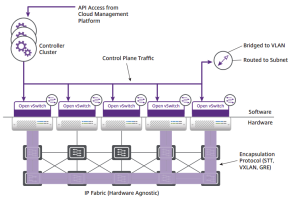 Network virtualization(NV) and SDN complements each other: NV is not a new topic and we have been virtualizing network functions in the form of VLANS, VRF, VPN etc. for several years. SDN and NV combination can be proved to be deadly solution in network industry. In general, however, NV solution refers to end to end network solution abstracting underlying physical network components. NV can be achieved by either running application in central controller of SDN while mapping L1-L4 header as per policy (fabric based) or overlaying multiple virtual network topologies on physical network. None of these solutions can address scalability as compared to combined SDN and NV solution as illustrated in the picture above. The combined development in the network virtualization has been the architecture that features a controller with virtual network elements such as vSwitches or vRouters. One of the primary roles of such controllers is to provide tunnel control plane functionality. This functionality allows the ingress device to implement a mapping operation that determines where the encapsulated packet should be sent to reach its intended destination VM.
Network virtualization(NV) and SDN complements each other: NV is not a new topic and we have been virtualizing network functions in the form of VLANS, VRF, VPN etc. for several years. SDN and NV combination can be proved to be deadly solution in network industry. In general, however, NV solution refers to end to end network solution abstracting underlying physical network components. NV can be achieved by either running application in central controller of SDN while mapping L1-L4 header as per policy (fabric based) or overlaying multiple virtual network topologies on physical network. None of these solutions can address scalability as compared to combined SDN and NV solution as illustrated in the picture above. The combined development in the network virtualization has been the architecture that features a controller with virtual network elements such as vSwitches or vRouters. One of the primary roles of such controllers is to provide tunnel control plane functionality. This functionality allows the ingress device to implement a mapping operation that determines where the encapsulated packet should be sent to reach its intended destination VM.
Challenges to Transform to SDN from Traditional: There is a lack of consensus amongst network player in ONF about definition for SDN. Some vendors view OpenFlow as a foundational element of their SDN solutions, where as other vendors are taking a wait and watch approach to OpenFlow. What constitutes at infrastructure layer is always subject to debate and discussion. Conceptually, (ONF – https://www.opennetworking.org/sdn-resources/openflow) the infrastructure layer is a broad range of physical and virtual switches and routers, whereas some implementation of network virtualization relies upon only virtual switches and routers.
Summary: SDN evolution is still at budding stage, It has long way to go but will go very fast. SDN along with NV can be quite an impactful solution in the current network industry to support digital era. IT and business need to embrace the need of R&D in SDN and support ONF community in achieving its goal. We still have to catch up with the maturity level that server virtualization has achieved. Certain things are progressing quite well, such as Cisco has conceptualized UCaaS (Unified computing as a service) following UCS principle and implemented in some infrastructure while addressing network accessibility and availability as location proof solution for remote, BYOD users as well as DR and BCP situation. While SDN is comprised of many enabling technologies, it addresses NV quite a bit either through overlay or fabric based. The primary benefit of a network virtualization solution is that it provides support for virtual machine mobility independent of the physical network. SDN, however, has other potential benefits including easing the administrative burden of provisioning functionality such as QoS and security. Digital economy drives the need to have global, flexible and service defined DC comprising SDN, SDS etc. solution. In the end, I would like to emphasis that considering all the potential benefits that SDN is likely to provide, IT department along with business need to develop a plan for how it will evolve their networks to incorporate SDN in a seamless manner.